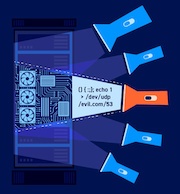Identify a target endpoint
-
In Burp's browser, log in to the application using the credentials
wiener:peter. -
Notice that the response contains your API key.
Identify path delimiters used by the origin server
-
In Proxy > HTTP history, right-click the
GET /my-accountrequest and select Send to Repeater. -
Go to the Repeater tab. Add an arbitrary segment to the path. For example, change the path to
/my-account/abc. -
Send the request. Notice the
404 Not Foundresponse with no evidence of caching. This indicates that the origin server doesn't abstract the path to/my-account. -
Remove the arbitrary segment and add an arbitrary string to the original path. For example, change the path to
/my-accountabc. -
Send the request. Notice the
404 Not Foundresponse with no evidence that the response was cached. You'll use this response as a reference to help you identify characters that aren't used as delimiters. -
Right-click the request and select Send to Intruder.
-
Go to the Intruder tab. Make sure that Sniper attack is selected and add a payload position after
/my-accountas follows:/my-account§§abc. -
In the Payloads side panel, under Payload configuration, add a list of characters that may be used as delimiters.
-
Under Payload encoding, deselect URL-encode these characters.
-
Click Start attack. The attack runs in a new window.
-
When the attack finishes, sort the results by Status code. Notice that the
;and?characters receive a200response with your API key. All other characters receive the404 Not Foundresponse. This indicates that the origin server uses;and?as path delimiters.
Investigate path delimiter discrepancies
-
Go to the Repeater tab that contains the
/my-accountabcrequest. -
Add the
?character after/my-accountand add a static file extension to the path. For example, update the path to/my-account?abc.js. -
Send the request. Notice that the response doesn't contain evidence of caching. This may indicate that the cache also uses
?as a path delimiter. -
Repeat this test using the
;character instead of?. Notice that the response contains theX-Cache: missheader. -
Resend the request. Notice that the value of the
X-Cacheheader changes tohit. This indicates that the cache doesn't use;as a path delimiter and has a cache rule based on the.jsstatic extension. You can use this payload for an exploit.
Craft an exploit
-
In Burp's browser, click Go to exploit server.
-
In the Body section, craft an exploit that navigates the victim user
carlosto the malicious URL you crafted earlier. Make sure to change the arbitrary string, so the cache creates a unique key andcarloscaches their account details instead of receiving your previously cached response:<script>document.location="https://YOUR-LAB-ID.web-security-academy.net/my-account;wcd.js"</script> -
Click Deliver exploit to victim. When the victim views the exploit, the response they receive is stored in the cache.
-
Go to the URL that you delivered to
carlos:https://YOUR-LAB-ID.web-security-academy.net/my-account;wcd.js -
Notice that the response includes the API key for
carlos. Copy this. -
Click Submit solution, then submit the API key for
carlosto solve the lab.


